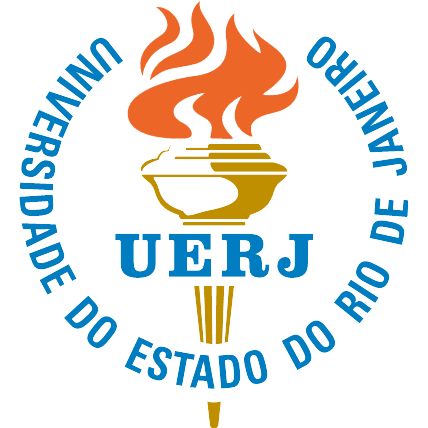Factors associated with compassion satisfaction and compassion fatigue among nursing professionals
DOI:
https://doi.org/10.12957/reuerj.2025.91414Keywords:
Hospitals, University, Nurse Practitioners, Compassion Fatigue, Epidemiologic FactorsAbstract
Objective: to analyze the association between compassion satisfaction and compassion fatigue with sociodemographic and occupational factors among nursing professionals. Method: cross-sectional analytical study conducted between August and December 2023 with 95 hospital nurses in the Midwest region of Brazil, using the Professional Quality of Life Scale. Data were analyzed with T-tests, ANOVA, and multiple linear regression. Ethical standards were observed. Results: high levels of compassion satisfaction (>42 points) and moderate levels of compassion fatigue (>23 points) were identified. Length of professional training up to five years and family income between six and fifteen thousand reais were associated with lower compassion satisfaction (11.7% of variance; p=0.006). Being a nurse and reporting negative, good, or fair working conditions were associated with higher compassion fatigue (10.9% of variance; p=0.009). Conclusion: adequate levels of professional quality of life were observed, with high compassion satisfaction and moderate compassion fatigue. Reductions in compassion satisfaction and increases in compassion fatigue were associated with sociodemographic and occupational variables.
References
1. Organização Pan-Americana da Saúde. Enfermagem na Região das Américas - 2023. OPAS/OMS; 2023 [cited 2025 Feb 23]. Available from: https://www.paho.org/pt/topicos/enfermagem/enfermagem-na-regiao-das-americas-2023.
2. Batalha EMSS, Borges EMN, Melleiro MM. Association between patient safety culture and professional quality of life among nursing professionals. Rev esc enferm USP. 2024 [cited 2024 Oct 10]; 58:e20230359. DOI: https://doi.org/10.1590/1980-220X-REEUSP-2023-0359en.
3. Søvold LE, Naslund JA, Kousoulis AA, Saxena S, Qoronfleh MW, Grobler C, et al. Prioritizing the mental health and well-being of healthcare workers: an urgent global public health priority. Front. Public Health. 2021 [cited 2024 Oct 23]; 9:679397. DOI: https://doi.org/10.3389/fpubh.2021.679397.
4. Lluch C, Galiana L, Doménech P, Sansó N. The Impact of the COVID-19 pandemic on burnout, compassion fatigue, and compassion satisfaction in healthcare personnel: a systematic review of the literature published during the first year of the pandemic. Healthcare. 2022 [cited 2024 Sep 25]; 10(2):364. DOI: https://doi.org/10.3390/healthcare10020364.
5. Rezio LA, Oliveira E, Queiroz AM, Sousa AR, Zerbetto SR, Marcheti PM, et al. Neoliberalism and precarious work in nursing in the COVID-19 pandemic: repercussions on mental health. Rev esc enferm USP. 2022 [cited 2024 Oct 05]; 56:e20210257. DOI: https://doi.org/10.1590/1980-220X-REEUSP-2021-0257.
6. Lee BEC, Ling M, Boyd L, Olsson C, Sheen J. The prevalence of probable mental health disorders among hospital healthcare workers during COVID-19: a systematic review and meta-analysis. J Affect Disord. 2023 [cited 2024 Nov 20]; 330:329–45. DOI: https://doi.org/10.1016/j.jad.2023.03.012.
7. Lobo R, Kumar SP, Tm R. Professional quality of life among mental health nurses: a systematic review and meta-analysis. Int J Ment Health Nurs. 2024 [cited 2025 Jan 10]; 33(6):2005–25. DOI: https://doi.org/10.1111/inm.13424.
8. Cavanagh N, Cockett G, Heinrich C, Doig L, Fiest K, Guichon JR, et al. Compassion fatigue in healthcare providers: a systematic review and meta-analysis. Nurs Ethics. 2020 [cited 2024 Sep 10]; 27(3):639–65. DOI: https://doi.org/10.1177/0969733019889400.
9. Stamm BH. The concise ProQOL manual. 2nd Ed [Internet]. Pocatello: Beth Hudnall Stamm; 2010 [cited 2025 Feb 24]. Available from:https://www.illinoisworknet.com/WIOA/Resources/Documents/The-Concise-ProQOL-Manual.pdf.
10. Lago K, Codo W. Compassion fatigue: evidence of internal consistency and factorial validity in ProQol-BR. Estud psicol (Natal). 2013 [cited 2025 Feb 27]; 18:213–21. Available from: https://www.scielo.br/j/epsic/a/vyz5Lg35SHqNZc83ZM39BPz/abstract/?lang=pt.
11. Abou HEA, Atalla ADG. The relationship between coping strategies, compassion satisfaction, and compassion fatigue during the COVID-19 pandemic. SAGE Open Nurs. 2023 [cited 2025 Feb 27]; 9:23779608231160463. DOI: https://doi.org/10.1177/23779608231160463.
12. Xie W, Chen L, Feng F, Okoli CTC, Tang P, Zeng L, et al. The prevalence of compassion satisfaction and compassion fatigue among nurses: a systematic review and meta-analysis. Int J Nurs Stud. 2021 [cited 2025 Feb 20]; 120:103973. DOI: https://doi.org/10.1016/j.ijnurstu.2021.103973.
13. Toebe TRP, Constant HMRM, Brandão ML, Silva GB, Medeiros JGT, Rabin EG. Identificação de fadiga por compaixão em enfermeiros de um hospital oncológico. Rev foco. 2023 [cited 2025 Jan 12]; 16(1):e768–8. DOI: https://doi.org/10.54751/revistafoco.v16n1-064.
14. Lourenção LG, Penha JGM, Neto FRGX, Santos BMP, Pantoja VJC, Ribeiro JN, et al. Analysis of the association between levels of compassion fatigue and work engagement with COVID-19 in nursing professionals. Ciênc saúde coletiva. 2023 [cited 2025 Jan 12]; 28(10):2867–77. DOI: https://doi.org/10.1590/1413-812320232810.09972023.
15. Torres J, Barbosa H, Pereira S, Cunha F, Torres S, Brito M, et al. Professional quality of life and factors associated in health professionals. Psic Saúde & Doenças. 2019 [cited 2024 Dec 8]; 20(3):670–81. DOI: http://dx.doi.org/10.15309/19psd200310.
16. Pinheiro JMG, Macedo ABT, Antoniolli L, Vega EAU, Tavares JP, Souza SBC. Professional quality of life and occupational stress in nursing workers during the COVID-19 pandemic. Rev Gaúcha Enferm. 2023 [cited 2024 Dec 8]; 44:e20210309. Available from: https://www.scielo.br/j/rgenf/a/FVnQBK5Mz4WQd83m7FVCD3F/?format=html&lang=en.
17. Fabri NV, Martins JT, Galdino MJ, Ribeiro RP, Moreira AA. Workplace violence and professional quality of life among primary care nurses. Acta Paul Enferm. 2022 [cited 2024 Dec 8];35:eAPE0362345. DOI: http://dx.doi.org/10.37689/acta-ape/2022AO0362345.
18. Von Elm EV, Altman DG, Egger M, Pocock SJ, Gøtzsche PC, Vandenbroucke JP. Strengthening the reporting of observational studies in epidemiology (STROBE) statement: guidelines for reporting observational studies. BMJ. 2007 [cited 2024 Oct 13]; 8:335-806. DOI: https://doi.org/10.1136/bmj.39335.541782.AD
19. Haukoos JS, Lewis RJ. Advanced Statistics: Bootstrapping Confidence Intervals for Statistics with “Difficult” Distributions. Acad Emerg Med. 2005 [cited 2024 Oct 13]; 12(4):360–5. DOI: https://doi.org./10.1197/j.aem.2004.11.018.
20. Balinbin CBV, Balatbat KTR, Balayan ANB, Balcueva MIC, Balicat MGB, Balidoy TAS, et al. Occupational determinants of compassion satisfaction and compassion fatigue among Filipino registered nurses. J Clin Nurs. 2020 [cited 2024 Dec 3]; 29(5–6):955–63. DOI: https://doi.org/10.1111/jocn.15163.
21. Xia W, Defang W, Xiaoli G, Jinrui C, Weidi W, Junya L, et al. Compassion satisfaction and compassion fatigue in frontline nurses during the COVID-19 pandemic in Wuhan, China. J Nurs Manag. 2022 [cited 2024 Oct 5]; 30(7):2537–48. DOI: https://doi.org/10.1111/jonm.13777.
22. Garnett A, Hui L, Oleynikov C, Boamah S. Compassion fatigue in healthcare providers: a scoping review. BMC Health Serv Res. 2023 [cited 2024 Oct 1]; 23(1):1336. DOI: https://doi.org/10.1186/s12913-023-10356-3.
23. Hamaideh S, Abu Khait A, Al-Modallal H, Masa’deh R, Hamdan-Mansour A, AlBashtawy M. Professional quality of life, job satisfaction, and intention to leave among psychiatric nurses: a cross-sectional study. Nurs. Rep. 2024 [cited 2024 Dec 3]; 14(2):719–32. DOI: https://doi.org/10.3390/nursrep14020055.
24. Aslan H, Erci B, Pekince H. Relationship between compassion fatigue in nurses, and work-related stress and the meaning of life. J Relig Health. 2022 [cited 2025 Jan 12]; 61(3):1848–60. DOI: https://doi.org/10.1007/s10943-020-01142-0.
25. Zhan Y, Liu Y, Chen Y, Liu H, Zhang W, Yan R, et al. The prevalence and influencing factors for compassion fatigue among nurses in Fangcang shelter hospitals: a cross-sectional study. Int J Nurs Pract. 2022 [cited 2025 Jan 12]; 28(5):e13054. DOI: https://doi.org/10.1111/ijn.13054.
26. Borges EMDN, Fonseca CINDS, Baptista PCP, Queirós CML, Baldonedo-Mosteiro M, Mosteiro-Diaz MP. Compassion fatigue among nurses working on an adult emergency and urgent care unit. Rev Latino-Am Enfermagem. 2019 [cited 2025 Jan 12]; 27:e3175. DOI: https://doi.org/10.1590/1518-8345.2973.3175.
27. Llop-Gironés A, Vračar A, Llop-Gironés G, Benach J, Angeli-Silva L, Jaimez L, et al. Employment and working conditions of nurses: where and how health inequalities have increased during the COVID-19 pandemic? Hum Resour Health. 2021 [cited 2025 Feb 20]; 19(1):112. DOI: https://doi.org/10.1186/s12960-021-00651-7.
28. Hill JE, Harris C, Danielle L. C, Boland P, Doherty AJ, Benedetto V, et al. The prevalence of mental health conditions in healthcare workers during and after a pandemic: systematic review and meta-analysis. J Adv Nurs. 2022 [cited 2025 Mar 18]; 78(6):1551–73. DOI: https://doi.org/10.1111/jan.15175.
29. Jiang W, Zhao X, Jiang J, Zhou Q, Yang J, Chen Y, et al. Hospital ethical climate associated with the professional quality of life among nurses during the early stage of COVID-19 pandemic in Wuhan, China: a cross-sectional study. Int J Nurs Sci. 2021 [cited 2025 Mar 18]; 8(3):310–7. DOI: https://doi.org/10.1016/j.ijnss.2021.05.002.
30. Koştu N, İnci FH, Arslan S. Compassion fatigue and the meaning in life as predictors of secondary traumatic stress in nurses during the COVID-19 pandemic. Int J Nurs Pract. 2024 [cited 2025 Mar 18]; 30(4):e13249. DOI: https://doi.org/10.1111/ijn.13249.
Published
How to Cite
Issue
Section
License
Copyright (c) 2025 Margani Cadore Weis Maia, Moisés Kogien, Victor Hugo Martins Santos, Larissa de Almeida Rézio, Marina Nolli Bittencourt

This work is licensed under a Creative Commons Attribution 4.0 International License.
When publishing in Revista Enfermagem UERJ, the authors declare that the work is their exclusive authorship and therefore assume full responsibility for its content.
Authors retain copyright to their article and agree to license their work using a Creative Commons Attribution International Public License (CC BY), thereby accepting the terms and conditions of this license (https://creativecommons.org/licenses/by/4.0/legalcode.en), which allows material created by the author to be distributed, copied and displayed by third parties. The original work must be cited and present a link to the article available on the website of the journal in which it was published.
The Copyright of the articles published in Revista Enfermagem UERJ belongs to their respective author(s), with the rights of first publication assigned to Revista Enfermagem UERJ, with the work simultaneously licensed under a Creative Commons License CC BY, which allows sharing of work with recognition of authorship and initial publication in this journal.
The authors grant Revista Enfermagem UERJ the right of first publication, to identify themselves as the original publisher of the work and grant the magazine a license of non-exclusive rights to use the work in the following ways:
- Sell and/or distribute the work in printed copies and/or electronic format;
- Distribute parts and/or the work as a whole with the aim of promoting the magazine through the internet and other digital and printed media;
- Record and playback work in any format, including digital media.
In line with the journal's policies, each published article will be assigned a Creative Commons Attribution (CC BY) license.









